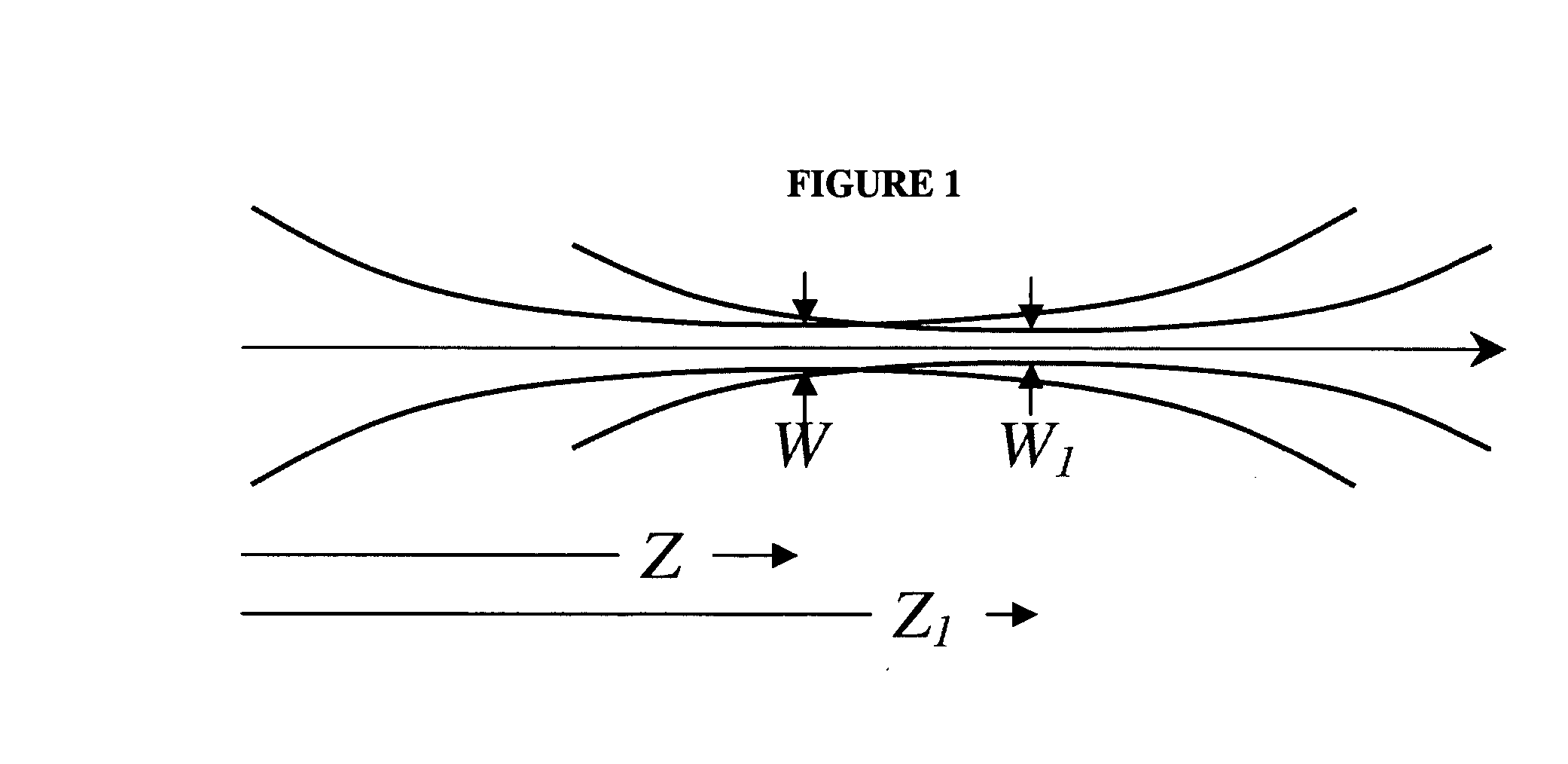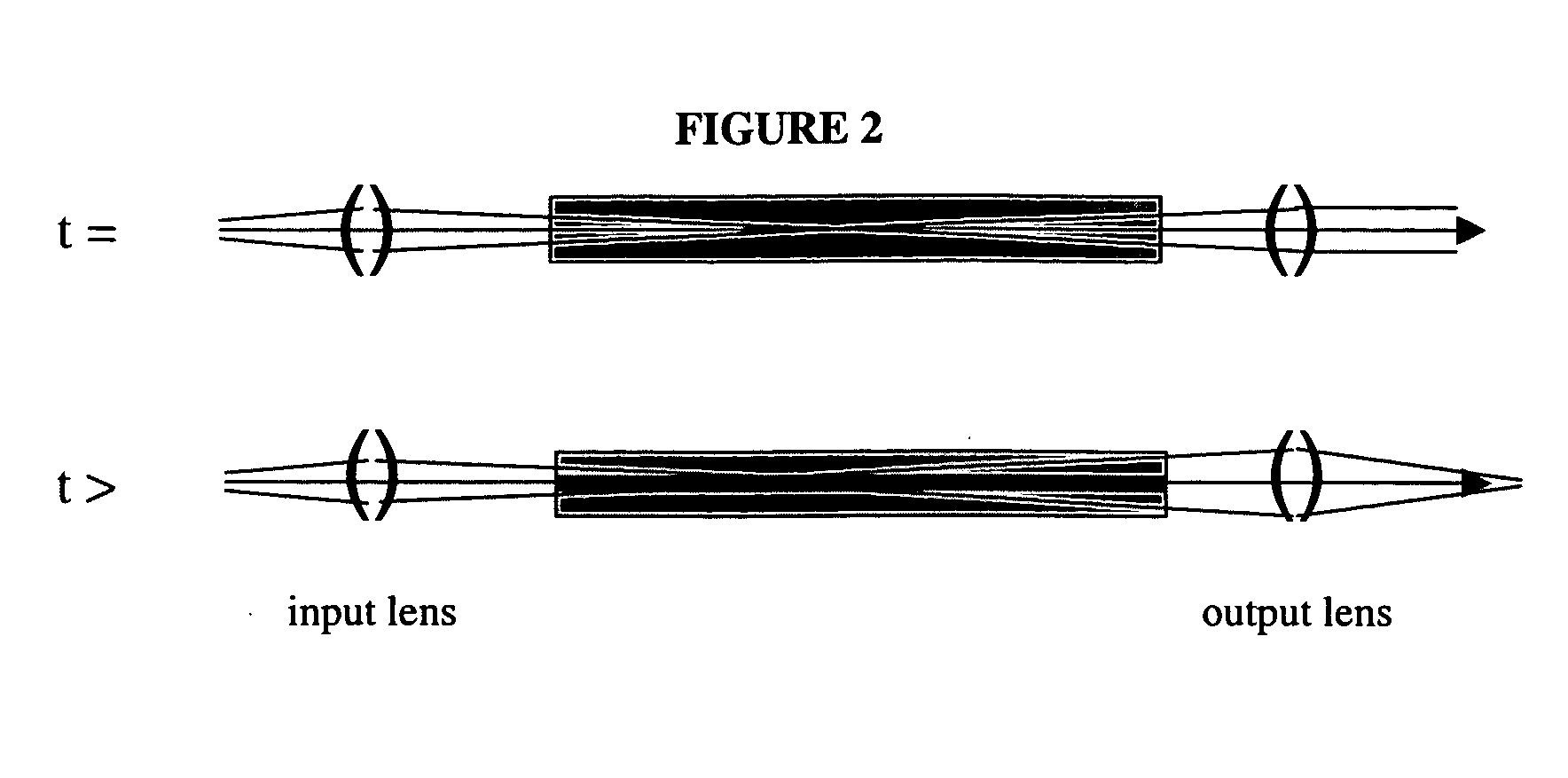Periodically poled potassium titanyl phosphate crystal
a potassium titanyl phosphate and crystal technology, applied in the field of thermoplastic treatment process, can solve the problems of frequency doubling, frequency doubling, crystal damage in service,
- Summary
- Abstract
- Description
- Claims
- Application Information
AI Technical Summary
Benefits of technology
Problems solved by technology
Method used
Image
Examples
Embodiment Construction
[0018] As previously indicated, in service the PPKTP frequency doubling crystal is known to undergo a variety of harmful changes in its performance characteristics over time. Among these changes are ones we refer to as Blue Induced Absorption (BIA) and Beam Shift Effect (BSE). Although it has not been definitely established, there is some evidence that both BIA and BSE are caused by the same or at least related changes which occur in the PPKTP crystal during operation, and that a treatment to the crystal that cures or at least ameliorates one condition will tend to ameliorate the other.
[0019] Considering first BSE, many users of blue lasers have very specific requirements for the optical beam parameters at the output of the laser, e.g., for beam waist diameter (650-750 μm) and waist location (±200 mm from the laser output window). When the PPKTP crystal undergoes changes over its operational life the beam waist will tend to decrease in diameter and move away from the laser output w...
PUM
 Login to View More
Login to View More Abstract
Description
Claims
Application Information
 Login to View More
Login to View More - R&D
- Intellectual Property
- Life Sciences
- Materials
- Tech Scout
- Unparalleled Data Quality
- Higher Quality Content
- 60% Fewer Hallucinations
Browse by: Latest US Patents, China's latest patents, Technical Efficacy Thesaurus, Application Domain, Technology Topic, Popular Technical Reports.
© 2025 PatSnap. All rights reserved.Legal|Privacy policy|Modern Slavery Act Transparency Statement|Sitemap|About US| Contact US: help@patsnap.com



